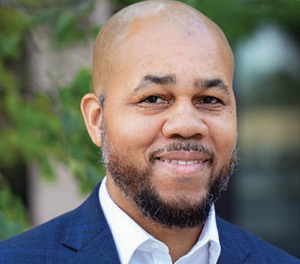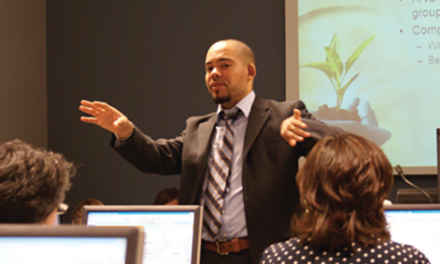Kappan’s editor talks with Northwestern University psychologist Emma K. Adam about her recent research into stress, stress hormones, sleep, and learning.
Kappan: To begin, tell us a bit about your professional background, the kinds of research questions you’ve pursued, and the research methods you use.
EMMA K. ADAM: I’m a developmental psychologist. More specifically, I’m a psychobiologist, which means I study how biological factors (such as hormone levels and sleep patterns) affect, and are affected by, kids’ experiences as they grow up. But I also have a master’s degree in public policy, and I’m fascinated by the ways in which schools and other institutions matter to child development.
Much of my research focuses on stress in adolescents, especially the ways they experience stress in their everyday lives, both at home and in school. In other words, I try to figure out what kids are most stressed about, and I study how that stress gets under their skin, affecting them physically, emotionally, and academically.
In my research, I collect data from a mix of sources. In part, I rely on people to self-report what they’re experiencing. For instance, I often use what’s called momentary sampling, where I’ll beep people at random times during the day and ask them to fill out a brief questionnaire about what they’re doing at that moment, who they’re with, and how they’re feeling. But at the same time, I also collect physiological data — for instance, when they fill out the questionnaire, they’ll also spit into a tube to provide a bit of saliva, which I can use to check their level of cortisol, or stress hormone, and see how it changes over the course of the day. And because stress is closely connected to sleep, I collect a lot of data on sleep patterns, too. People tend to sleep more lightly at times of stress, which makes sense from an evolutionary perspective — when there are tigers around, sleeping deeply could get you eaten.
It’s a vicious cycle: Stress causes students’ cortisol levels to rise, which causes poor sleep, which causes fatigue, which impairs learning, which causes stress.
Kappan: So when you conduct research into stress, you’re actually studying a whole cluster of things that are closely linked to each other: adolescents’ feelings of stress, their production of stress hormones, their sleep patterns, and their performance in school and on tests.
ADAM: Yes, all of these things influence each other. For instance, people’s stress hormone levels tend to follow a predictable pattern over the course of the day: When you wake up in the morning, you get a surge of cortisol, which gives you a boost of energy and helps you get going. Then your cortisol level tapers off during the day, then drops some more in the evening, which allows you to settle down and get a good night’s sleep, which is essential to learning — while we sleep, we consolidate what we learned during the day, transferring information from short-term to long-term memory.
However, if you’re under a lot of stress during the day, then your cortisol level stays elevated at night. That causes you to sleep more lightly, which prevents you from fully processing what you’ve learned. Further, if you produce more cortisol at night, while you’re sleeping, then your cortisol level tends to be lower in the morning, which means you don’t get that initial burst of energy that’s so important for waking up and preparing for the day. Then, because you’re groggy, you can’t focus so well, which makes you stressed out. In short, it’s a vicious cycle: Stress causes students’ cortisol levels to rise, which causes poor sleep, which causes fatigue, which impairs learning, which causes stress . . .
Moreover, the cycle is especially vicious for adolescents. Not only are their cortisol levels particularly reactive, but they’re dealing with all sorts of school demands and social changes. Plus, adolescents tend to have a distinct, owl-like sleep pattern. They get sleepier later and find it harder to wake up early. It’s as though they have to cope with jet lag every day, while teachers are asking them to pay attention and perform. It doesn’t help much to tell them to go to bed earlier; over time, they might be able to shift to a different sleep pattern, but they’re pushing against their own biology. It can be very helpful to give them a later start time and let them sleep in a bit longer, but it’s hard to convince school districts to make that change.
Kappan: Are today’s adolescents more stressed out than their predecessors, or is every generation more or less equally stressed?
ADAM: A lot of emerging evidence (from sources including the American Psychological Association’s Stress in America survey) suggests that levels of stress and depression among adolescents have increased significantly over the last eight or nine years. Now, we don’t know precisely why this has happened — for example, some of it may have to do with political events, worries about the environment, sociological factors, and so on — but what adolescents report, when asked to describe the most stressful parts of everyday life, is that academic work is their biggest source of stress.
The next biggest source, they say, is social stress, especially feelings of social exclusion. But while social stress comes in second on the list, it has the greatest emotional impact, and it’s most closely associated with depression and major anxiety. Not that I want to diminish the intensity of academic stress — it’s very real. But social stress does seem to have the more serious consequences for mental health.
On this score, it’s easy to see how media use might play a key role. We’re a social species, so it would make sense that declines in face-to-face interaction would make us feel isolated and anxious. And in fact, researchers have found that heavy social media use (that is, 4-5 or more hours per day) is associated with depressive symptoms. I’m not saying that all social media is bad — teenagers often use it as a source of social support and cohesion — but it becomes a problem when it displaces personal, face-to-face interactions.
Kappan: In your research into adolescent stress, you’ve also found significant racial disparities, right?
ADAM: At first, my research didn’t focus specifically on racial disparities, but then I kept finding that Black (and to some extent Latinx) students had stress hormone patterns across the day that were indicative of chronic stress. They produced less than the usual amount of cortisol in the morning (when you need a jump-start) and more cortisol at night (when you need to sleep) — overall the pattern tended to be flatter, suggesting chronic stress that never really lets up.
That’s consistent with what I and other researchers have found on the national level, too: On average, for example, Black students get half an hour less sleep per night than White students. That’s likely caused by greater stress and possibly by elevated nighttime cortisol levels, and it likely has a sizable impact on well-being and school performance.
It’s also consistent with students’ own perceptions of the discrimination they face in everyday life. On questionnaires and in diary entries, Black students are much more likely than White students to describe themselves as walking around in a perpetual state of hypervigilance, constantly expecting to be subject to microaggressions and explicit threats. There’s emotional wear and tear associated with just going through the day, facing real and anticipated threats, and it manifests as altered cortisol levels, which make it difficult to focus at school and sleep at night.
Kappan: But while White Americans don’t face the stresses of everyday racism, you’ve found that their stress levels do rise when interacting with non-Whites. Tell us about that research.
While racism creates terrible stress for people of color, it stresses out White people, too.
ADAM: Several years ago, we measured the racial attitudes of White adults and then measured their cortisol levels when they interacted with people of other races. We found that those who were most worried about appearing prejudiced tended to become much more stressed out. So, in effect, we found evidence to support what a lot of us probably knew already: While racism creates terrible stress for people of color, it stresses out White people, too. The more anxious they are not to come across as racist, the more anxious and awkward they become. Just being in an interracial setting makes their cortisol levels rise.
Kappan: Does the research tell us anything about stress as it relates to other factors, like income level or sex and gender?
ADAM: The more years children spend in poverty, the more dysregulated their stress hormones become, and there’s some evidence that kids from lower-income backgrounds don’t sleep as well. But when it comes to adolescents’ cortisol and sleep patterns, it becomes hard to tease out differences by family income. For instance, affluent kids may be more likely to stay up late studying, so their sleep patterns may look similar to those of teenagers living in poverty, but for very different reasons.
I haven’t seen huge differences in cortisol levels by gender, but stress may have differing emotional implications for boys and girls. Specifically, stress appears to be linked more closely to depression in girls, as is the association between depression and heavy social media use.
Kappan: Does the research allow us to quantify the extent to which stress affects academic performance in general?
ADAM: Yes and no. Given the evidence on differing levels of self-reported stress, differing cortisol measures, and differing sleep patterns, it’s reasonable to connect the dots and hypothesize that stress is a major contributor to achievement gaps. So far, though, I don’t know of any research studies that were specifically designed to measure the effect of stress on disparities in overall school performance.
However, I have studied cortisol levels as they relate to standardized testing. A couple of years ago, my team conducted a research project in a charter school network in New Orleans. We measured students’ cortisol levels three times — once during a regular week of classes, once right before students took in-school tests, and once right before students took the state’s high-stakes standardized exam. Our main finding was that cortisol levels spiked the most before the state exam, and those levels strongly predicted student’s scores.
The students who did the worst on the exam were those whose cortisol levels didn’t rise at all (suggesting very low engagement in the test) and those whose cortisol rose the most (suggesting a high level of stress). Those whose cortisol rose modestly performed the best — which is not surprising, given that a small increase in cortisol gives you a boost of energy and concentration, without pushing you into threat-response mode. And the difference in test scores was pretty significant, especially for math. We found that students with high levels of cortisol scored .4 standard deviations lower than those with modest levels — by way of illustration, that’s equivalent to scoring 80 points lower on the SAT.
Kappan: What have you learned about the effectiveness of interventions designed to help students sleep better, calm themselves, or otherwise reduce their stress levels?
ADAM: Right now, a lot of researchers are conducting studies into meditation and mindfulness, which have become hot topics in education. So far, though, most studies have focused on health outcomes, not academic outcomes per se. In one of our recent studies, we looked at the effects of meditating at school for 30 minutes per day — 15 minutes in the morning, 15 minutes in the afternoon — but while we saw some positive changes in students’ blood pressure, we haven’t yet seen any effects on academic performance.
We created another intervention targeting adolescents’ sleep patterns. It involved sending students nightly text messages encouraging them to go to bed earlier. We also had them wear a device — kind of like a Fitbit — that gave them personal feedback on how long they slept, and how well. And we did see an increase in sleep time, but only for the White kids in the study.
But the work that’s nearest and dearest to my heart is an ongoing study of a school-based intervention created by Adriana Umaña-Taylor, at the Harvard Graduate School of Education, designed to reduce race-based stress at school by promoting positive ethnic identity. It’s a classroom-based intervention, 10 hours in total, that gives students opportunities to explore their own heritage and share the nuances of their cultural and ethnic background with peers. We’re studying its effects at a large and diverse school in the Chicago area, and we’re hopeful that it will prove to be protective for kids of color, bolstering their positive sense of self and pride in their ethnicity, race, and culture, while also helping White kids become more accustomed to and less stressed about interracial discussions. Previous research on the intervention has found that it has positive effects on identity development, self-esteem, and grades. But ours is the first study to look at biological factors, specifically the effects on cortisol, mood, and sleep patterns, as well as academic outcomes.
Kappan: If you were speaking to a roomful of teachers, principals, and school district leaders, what would you want them to know about the recent research into adolescent stress?
ADAM: I’d want to share four main points. The first is one that many teachers know already, which is that it’s important to recognize just how much students’ in-school performance is influenced by the burdens they carry with them from the outside world. Their stress levels, their sleep patterns, and other out-of-school factors have profound effects on how they do in the classroom.
Second is that they should be careful not to underestimate the effects of social exclusion and racial stress. Social stressors have powerful influences on adolescents’ emotional health, mood, and attention. That’s especially true for students of color, who often go through the entire day, every day, with their cortisol levels on simmer, constantly on alert for microaggressions, discrimination, and other threats.
Third is to recognize that the stress of test-taking has significant effects on test scores, particularly for students whose stress levels are already elevated. The research findings in this area ought to cast serious doubt on the assumption that tests are accurate measures of student knowledge and achievement.
Last, I think it’s critical for schools to understand that they have a responsibility to take adolescent stress seriously and, if students are struggling, to direct them to appropriate services. Across the country, we’re now seeing growing investment in school health clinics, which is great, and some schools have begun to require that all students be screened for anxiety and depression. But we need much more data on what’s going on with adolescents, and much greater efforts to help them manage and reduce the stress in their lives.

EMMA K. ADAM is Edwina S. Tarry Professor of Human Development in the School of Education and Social Policy, as well as a faculty fellow at the Institute for Policy Research, at Northwestern University, Evanston, Illinois. She is a developmental psychologist with an interest in applying theory and research on human development to policies and programs aimed at improving the well-being of children, adolescents, and young adults. She is an expert in the developmental psychobiology of stress and sleep.

Her current research projects examine the role of stress, stress hormones, and sleep in the development of mood and anxiety disorders in adolescents and young adults; racial/ethnic disparities in stress and the impact of perceived discrimination on stress hormones, sleep, health, and academic performance, and the development and implementation of interventions designed to reduce student stress and improve mental and physical health and academic performance.
Adam earned her Ph.D. in child psychology from the University of Minnesota, a master’s degree in public policy from the University of Chicago, and master’s and bachelor’s degrees from the University of Toronto. She is the recipient of a National Academy of Education/Spencer Foundation Postdoctoral Fellowship (2003-04), a William T. Grant Scholars Award (2004-09), and most recently the prestigious Curt Richter Award from the International Society of Psychoneuroendocrinology (2013).
Citation: Heller, R. (2019, Oct. 28). Stress gets under your skin: A conversation with Emma K. Adam. Phi Delta Kappan, 101 (3), 32-36.
ABOUT THE AUTHOR

Rafael Heller
Rafael Heller is the former editor-in-chief of Kappan magazine.










